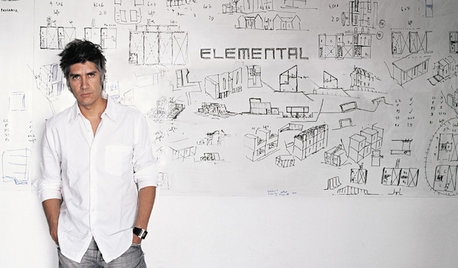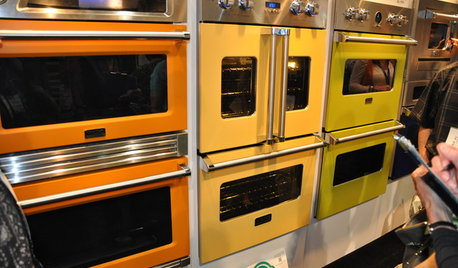This is an article I wrote targeted for technicians. I just thought I'd share it here too.
"Experts, Experts, Everywhere"
Is all of the Toyota stuff in the media starting to get
under your skin a bit? Seems there are experts everywhere
who know exactly what is wrong with the cars and the
engineers are simply unaware of these simple causes. Take
the professor who rigged a few jumper wires so that he could
make a connection and simulate wide open throttle and got
himself on TV for his efforts. Of course he forced wide open
throttle by doing that, he gave the PCM the same inputs that
it would get with a full throttle command from the pedal
assembly. Any first year college electronics student would
be able to do the same thing. The problem with his approach,
just like so many of the other "experts" who have chimed in
about the unintended acceleration reports is that they are
starting with an unproven assumption about a possible
vehicle condition. Then they try to create their assumption
as proof of their idea. Technicians that have attended some
of the classes that I teach know that I call this "tainted
intuition" and it usually leads to wasted time when
performing diagnostics. None of these experts are starting
from the simple initial step of confirming the reported
problem that all of us must do in order to accurately
diagnose a vehicle condition.
When I start my "How do you test a horn" lecture I make the
students call out the correct first step before we proceed.
Many will say that they check the fuse, some will check the
horn itself, others will check the power for the horn, and
or its ground circuit. I keep them firing off suggestions
until someone finally says to reach into the car and press
on the horn pad so that they verify that the customers
concern is present on the vehicle. If the horn works when
they press on the horn pad then at that moment there is
virtually nothing for them to find. However, if it does not
blow then and only then can they move onto the second step.
All of these experts getting onto the news are skipping that
all important first step and they appear to be oblivious to
the consequences of their flawed diagnostic process.
A caller into my weekly radio show claimed that his wife had
an acceleration complaint with her Camry. With all of the
other reports in the news she became afraid of the car and
traded it in. As a technician first, I asked him several
questions about the reported incidents. Unable to give me
the details that I really wanted to hear I then asked him if
I could speak to her directly. That by the way is exactly
how I would deal with a reported vehicle problem in my shop
as well, especially when I suspect that I am not receiving
the whole story from the initial contact. The following
week, his wife called into the show and here is the
description of the reported acceleration incident with her
car from the information that she gave me. It occurred two
times and both times the vehicle was at highway speed when
she suddenly noticed that the car was accelerating while she
wasn't on the throttle. Both times she had the cruise
control engaged and it had been that way for more than ten
minutes. Both times when it happened, she hit the brake
pedal and the car immediately stopped accelerating.
Now does that description sound familiar? I don't recall a
time in my career when I haven't heard similar reports from
vehicle owners including ones where as soon as the driver
released the brake pedal the car resumed accelerating. A
faulty cruise control resume/accelerate switch "can" cause
such a reported event. I stress the can in that sentence
simply because it's one of the places to look for the
concern during a reported event, and only during a genuine
event. If you do get to experience the reported issue you
can easily accurately diagnose it, otherwise you're limited
to taking the risk of the best guess and in the caller's
case that would lead to replacing the cruise control resume
switch. The fatal flaw with this choice is that the customer
never really knows for sure if the car has been fixed or not
until it acts up and proves that it wasn't.
We have probably all had situations when we were in the
process of diagnosing a customer's concern when the circuit
suddenly started working correctly and we then could not
complete the diagnostics for the car and locate the problem
until the next time that it acted up, at least I know I've
had more than my share of these incidents. We often result
to pushing and pulling on the wiring harnesses in the hopes
that we can cause the issue to return so that we get to
resume the diagnostic process. Sometimes that worked for us,
sometimes it didn't. But the one thing that we would not do
is reach down and cut a wire in a circuit which forces it
open in order to claim that is what the problem is. Yet this
is exactly how many of the experts have tried to prove their
theories on the alleged Toyota problem. For their efforts
they have gotten themselves on TV and praise in the media,
yet if we acted like that the only media attention we would
get is from the local stations consumer editor wanting to
know why we were ripping off our customers.
One thing is certain in my opinion. If there is a genuine
issue, Toyota's engineers will find it by following a good
diagnostic process. These experts the media has been
parading in front of the cameras based on their actions
aren't qualified to work unsupervised in our bays.
John G













john_gOriginal Author
Related Discussions
Hobbit cottage in Fine Home Building mag
Q
Interesting article on bulbs
Q
Gumwood Kitchen -- Attic Mag
Q
Lookie what I wrote...
Q